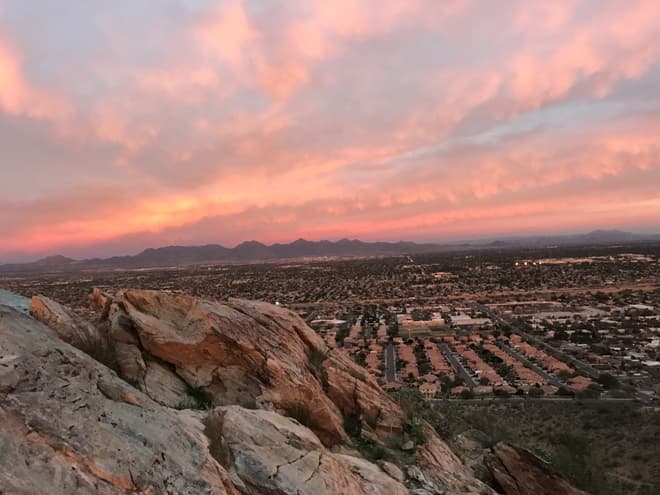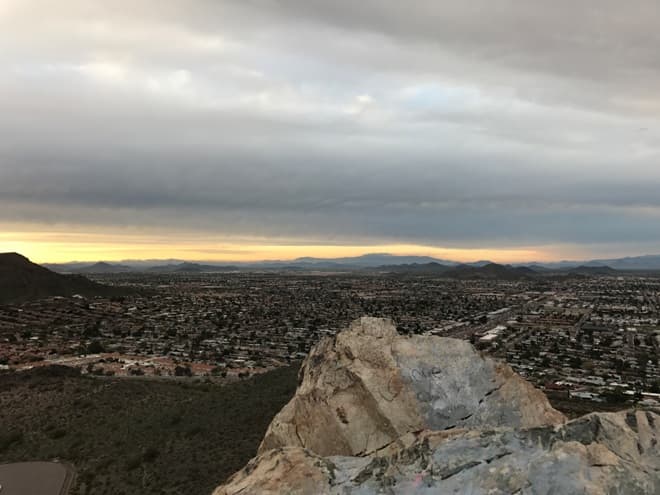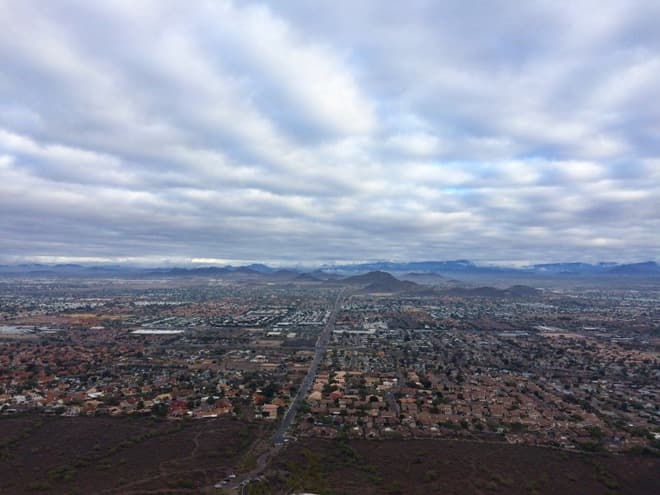
Photo Credit: Stunning Arizona by Colleen Stinchcomb
Arizona is a stunning state, but not one without it’s risk factors. You’ve probably heard about the cactus, rattlesnakes, and the possibility of overheating in the desert – but you may not have heard about a fungal infection prominent in the Phoenix area called Valley fever. Killing more than 3,000 people since 1990 and infecting more than 150,000 a year, Valley fever is a public health crisis every Arizonan should know about.
According to the CDC, coccidioidomycosis, more commonly known as Valley fever, is the result of being infected with the fungus Coccidioides. Although it often presents as a respiratory issue, it has several potential symptoms. The fungus is endemic to certain desert areas and lives in desert soil. The fungus spores become air born and can infect people in the local area who breathe them in.
It’s not contagious between people, but it’s more common than you think. Dr. John Galgiani, who has more than forty years experience with Valley fever and is Director of Valley Fever Center for Excellence, points particularly to pneumonia. “If you develop a pneumonia and go to your doctor because of symptoms of pneumonia,” he says, “it’s about a 30% chance that the pneumonia is due to valley fever.”
According to the CDC, the symptoms look similar to the flu: fatigue, cough, fever, shortness of breath, headache, night sweats. They can also include joint pain and rashes on the upper body or legs. They appear between 1 to 3 weeks after inhaling the spores.

Photo Credit: Arizona Movers Should Know About Valley Fever by Colleen Stinchcomb
Most people who become infected with Valley fever don’t get sick. Although Dr. Galgiani estimates 150,000 people in the U.S. become infected every year, “two out of three infections don’t result in an illness,” he says.
Some, however, get very sick. Dominic D’Urso was one of them. D’Urso is 27-year-old a Organismal Biology graduate who moved to Arizona from Ohio in early 2016. He was enjoying the winter weather in his new state by hiking and biking around the Phoenix mountains… until he started to feel ill. “My symptoms began as general fatigue and acute pain when inhaling to near-max lung capacity,” he told me. “Then I developed a severe rash covering most of my torso. The fatigue got worse, I felt really drained and my mind seemed hazy.”
Dominic’s story is why Valley fever is a disease worth knowing about. There aren’t currently vaccines to prevent it, and if you’re never lived in an area where Valley fever exists before, you’re more susceptible to it than people who have been exposed to it for a long time. As you get settled into Phoenix, the likelihood that you’ve unknowingly become infected increases. “The numbers I use are three percent a year,” Dr. Galgiani says. So once you’ve lived in Phoenix for five years, the chance that you have been infected with - and likely built an immunity to - Valley fever are around 15 percent. And every year you have a one in 30 chance of becoming infected, he says.
After Dominic broke out in a rash on his abdomen, he made an appointment with his doctor. He’d done his research and asked if she thought he might have Valley fever. She told him no. Although the CDC says one of the most common ways to test for Valley fever only requires a basic blood test that looks for Coccidioides antibodies or antigens, she didn’t order the test.
Unfortunately, that’s not uncommon. “Many doctors are not well-versed in Valley Fever,” Dr. Galgiani says. A big part of that, he says, is that the majority of doctors, even ones who are trained in Arizona, are being educated outside of the areas where Valley fever is most common. “They’re busy so they don’t stop what they’re doing and suddenly learn about Valley fever. It takes them a while, possibly never, to really know what to do about it.”
Meanwhile, Dominic was still struggling. He developed an infection in the fatty layer of skin on his legs. “It started out as little bumps like mosquito bites that soon swelled to the size of a bisected golf ball,” he told me. “They became red and tender and I eventually was unable to walk or put on shoes.” He went back to his doctor who still insisted he did not have Valley fever. Eventually, he ended up in the ER where a doctor diagnosed him with Valley fever and put him on IV anti-fungal medication. “My condition immediately began to improve,” he said. He spent four nights in the hospital and was given a prescription for oral anti-fungal drugs (Diflucan) for eight months after he was discharged. He hasn’t had symptoms since the hospital.

Photo Credit: Arizona Valley Fever by Colleen Stinchcomb
Dominic’s treatment was typical of Valley fever intervention. “The most common treatment is oral anti-fungal drugs, the most common of which is Fluconozale,” Dr Galgiani says. “But there are other drugs, some of which are oral, some of which have to be given intravenously.” Surgery may also be required to drain infections or stabilize parts of the body like the spine, he says.
Even people who get ill enough to seek medical attention, like Dominic, often get better on their own, Dr. Galgiani says, though they may be sick for several weeks, even months. But it’s still worth getting the diagnosis. “If for nothing else,” he says, “you stop doing all sorts of things that have no value whatsoever, like antibacterial drugs.” For example, one of the common symptoms of Valley fever is pneumonia, for which common treatment is antibacterial drugs. Those aren’t helpful if a fungal infection like Valley fever is the cause.
Unfortunately, as in Dominic’s case, the treatment for severe cases is rarely quick. “The drugs don’t cure the disease, they suppress it,” Dr. Galgiani tells me. “If your immune system is unable to control it after you stop the treatment. It recurs.”
Are there ways to lower your risk for Valley fever in Phoenix? “The short answer is no,” he says. “Living here is the risk.” Funguses are equal-opportunity attackers, since everyone is capable of inhaling a spore. Those at risk of getting severely ill are people who are immunosuppressed. But there are risks everywhere, he reminds me, and being educated about Valley fever so that you can bring it up to your doctor is an incredible help.
What can you do? He suggests bringing it up with your local officials. “It’s a very large public health problem. The rough numbers are something like half a billion dollars a year if you take into account inpatient medical expenses, outpatient medical expenses and lost productivity because of the disease.” He points out that Phoenix has half of all U.S. infections. The state of Arizona has two thirds of all U.S. infections. So although it’s a big problem for Arizonans, it goes largely unreported by the rest of the country. Making it an issue for local lawmakers is crucial for getting funding for better research and improved treatments.
###
Colleen Stinchcombe is a writer living in Phoenix, AZ. She writes for publishers, brands and individuals. Her work can be found on SheKnows.com, Green Living AZ, the Brandless blog, Canadian Pharmacy Blog and elsewhere.
Your email address will not be published. Required fields are marked with *.